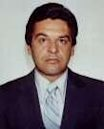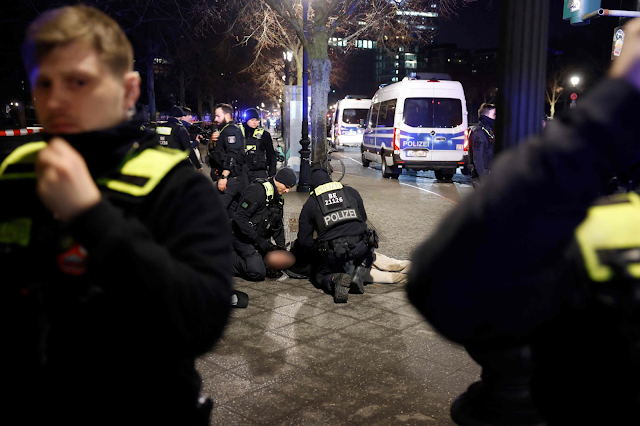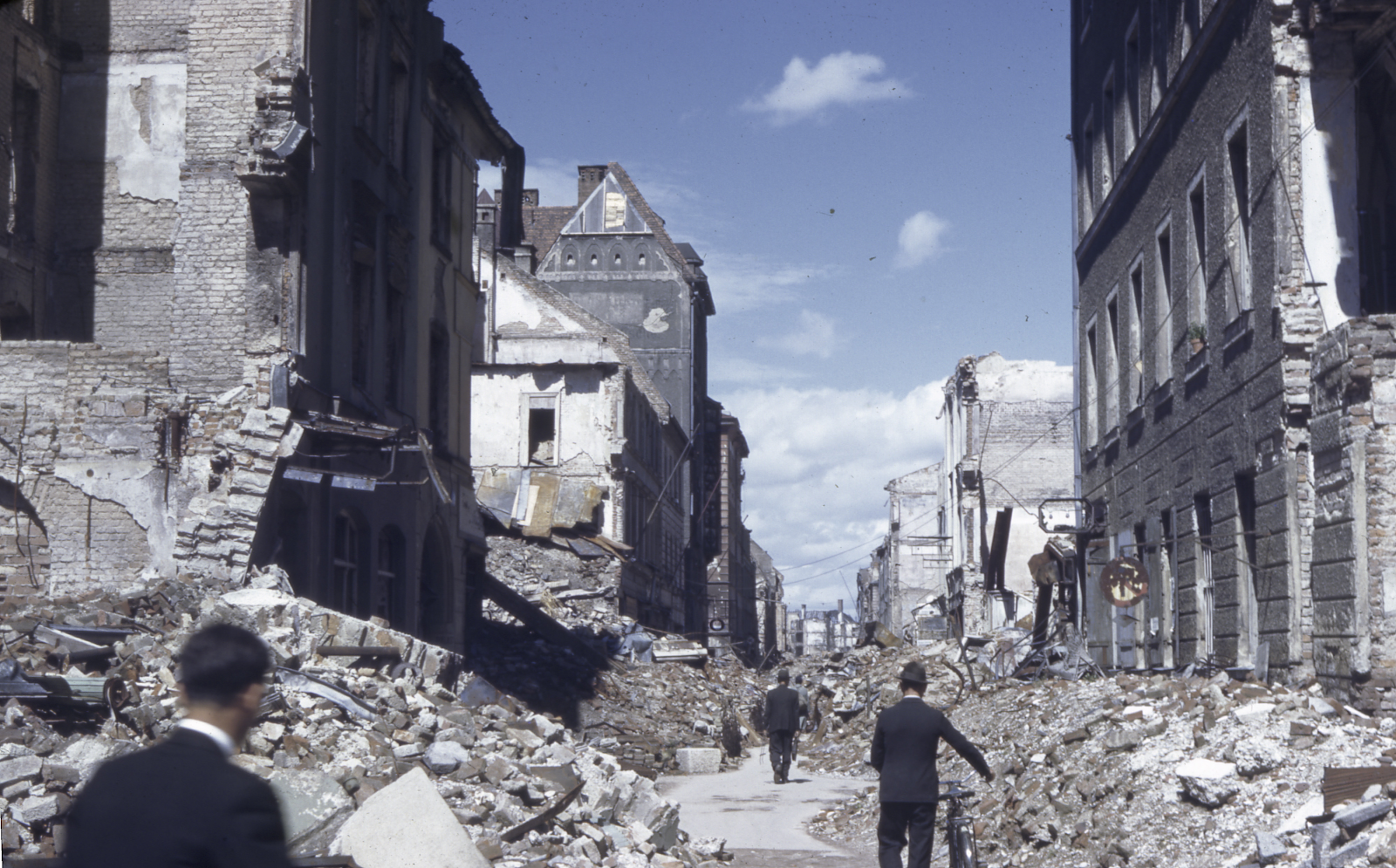The Hofbrauhaus
Oktoberfest
When we think of Munich, we think of happy events, the Oktoberfest, the Hofbrauhaus, the beer halls, and the beer gardens. Munich is a wonderful city, always a pleasure to visit. However, like all major cities, it has seen its share of tragedy, and it has its share of dark periods, largely due to its prominent role in the Third Reich. This week, the city experienced its latest tragedy when an Afghan asylum-seeker drove a car into a crowd of people and killed two people, a mother and her two-year-old daughter. Over 30 others were injured.
If we go back just to the early 20th century, the city has witnessed its share of unfortunate history. In 1914, when Germany declared war, a large crowd formed in the square on Odeonsplatz in front of the Feldherrnhalle memorial to the Bavarian army and cheered wildly. One of the people in the crowd was none other than Adolf Hitler, who had recently moved to Munich from Vienna to escape Austrian military service. Ironically, he was more than eager to join the German army and fight in World War 1. Incredibly, a photo taken at the time reportedly captured the image of Hitler, still a complete unknown at that time. (Some historians have questioned the validity of the photograph.)

When the war ended, Hitler was in a military hospital, having been temporarily blinded in a gas attack. Returning to Munich, he remained for a while in the army and eventually joined the fledgling German Workers Party, which became the National Socialist German Workers Party (Nazis), and where he quickly rose to become its leader. Munich has since been known as the "birthplace of Nazism."
Prior to that, however, Germany dissolved into chaos following the war. In Munich, the House of Wittelsbach was overthrown, and a Bavarian Soviet Republic was proclaimed in November 1918, under Kurt Eisner, who was later assassinated in Munich the following year. Amid all the fighting around the country, the communist government was removed in a vicious battle in Munich in which hundreds died.
Kurt Eisner
In 1923, the Nazi party, under Hitler's leadership, attempted a coup ( the Beer Hall Putsch) which began in Munich and was intended to lead to the capital in Berlin. It all ended in a hail of bullets at the aforementioned Odeonsplatz. Hitler was arrested a few days later and spent nearly a year in nearby Landsberg Prison, where he wrote Mein Kampf. After his release in December 1924, Hitler returned to Munich where the party rebuilt itself after the national ban was lifted. After a gradual series of electoral victories, Hitler was appointed chancellor in January 1933 by President Paul von Hindenburg. By that time, Hitler had not only purchased a villa in Berchtesgaden, but an apartment on Prinzregentenplatz in Munich. In 1931, Hitler's niece, Geli Raubal, whom he was living with in the apartment and with whom Hitler was rumored to have some sort of improper relationship, was found dead in the Prinzregenten apartment of an (apparent) self-inflicted gunshot wound. The mystery surrounding her death has never been solved. It was also in Munich during this era that Hitler met Eva Braun, who was born in the city.

Angela "Geli" Raubal
1908-1931
16 Prinzregentenplatz
Hitler's apartment was on the second floor (in the US would be considered third floor). The building now houses a police station.
By June 1934, Hitler had long since abolished any semblance of democracy in Germany, and the first concentration camp was established at Dachau, just a few kilometers outside Munich. On June 30, 1934, came the so-called "Night of the Long Knives". That was when Hitler moved against the Sturmabteilung (Storm Troops) under Ernst Roehm, a Munich native, who Hitler believed was plotting against him. After being arrested in nearby Bad Wiessee, Roehm and others were brought to Munich's Stadelheim prison, where they were summarily shot, Roehm in his cell when he refused to shoot himself. Roehm is buried in the city's West Cemetery.
Ernst Roehm
Stadelheim prison
Munich, of course, was the scene of the infamous agreement concluded by Britain and France that allowed Hitler to take possession of the Sudentenland portion of Czechoslovakia, which was inhabited largely by German-speaking people. The name Munich became synonymous with this international sellout.
On November 7, 1938, a young Jew of Polish origin named Herschel Grynszpan walked into the German embassy in Paris and shot an embassy official, Ernst vom Rath. Grynszpan was enraged because his family had been deported from Germany to Poland. Vom Rath died 2 days later, and while the annual Nazi commemoration of the Beer Hall Putsch was in progress in Munich, Nazi leaders who were attending, upon being notified of vom Rath's death, put the calls out around the country that resulted in the pogrom all over Germany against Jewish citizens and their homes and businesses that very night. Grynzspan was eventually killed by the Nazis in France during the occupation of World War 2.
In November 1939, Hitler was speaking at the Burgerbraukeller in Munich, again at the annual commemoration of the Beer Hall Putsch, when a bomb exploded under the podium where he had been speaking just minutes before. Hitler had unexpectedly cut short his speech and was on a train back to Berlin when the bomb went off. A lone would-be assassin, Georg Elser, was arrested while attempting to cross over into Switzerland that same night and was found to be the bomber while in police custody. He was executed by the Nazis only in the closing days of World War 2.
Burgerbraukeller after 1939 bombing
In June 1942, with World War 2 underway, a resistance group arose in Munich against the war and against Hitler's government. It consisted of a group called "The White Rose", a small group of students at the University of Munich and one of their professors (Kurt Huber). They produced pamphlets clandestinely and distributed them not just in Munich, but in different parts of Germany, riding the trains to various towns, dropping off pamphlets in open spaces where they could be found, and returning to Munich. The principal members were Sophie Scholl and her brother Hans, who had served in the army on the Eastern Front and knew of the atrocities being committed there. Hans and Sophie were arrested in February 1943 while dropping pamphlets in a University of Munich lecture hall. Others in their group were gradually arrested in the ensuing months. Hans and Sophie, as well as another Munich student, Christoph Probst, were brought to trial within days before the infamous hanging judge, Roland Freisler, who had been brought in from Berlin to conduct the trial. Condemned to death, all three were transported to Stadelheim prison and guillotined the same day. Others would follow in the ensuing months, Huber, Willi Graf, and Alexander Schmorell. Today, their names are honored in Germany.

Hans and Sophie Scholl
Ludwig-Maximillian University, Munich, where Hans and Sophie Scholl were arrested
The Scholls, Probst and Schmorell are buried in Munich's Perlacher Forst Cemetery.
(L-R) Graves of Hans Scholl, Sophie Scholl, and Christoph Probst
As with virtually every major city in Germany, Munich was leveled by the Allies in World War 2.
Munich 1945
Though largely overlooked by history, the final act of Munich's Nazi history was played out in October 1946 when ten Nazi defendants, convicted in the Nuremberg war crimes trials were hanged in the prison in Nuremberg. An 11th, Hermann Goering, committed suicide by cyanide capsule in his cell hours before the executions began. From Nuremberg, the bodies were put on lorries and trucked to Munich, a 2-hour drive from Nuremberg. It was in Munich that their bodies were cremated. Contrary to some accounts that claimed the cremations were carried out in the ovens of Dachau, the bodies were actually cremated at the East Cemetery of Munich. The ashes were then carried to a requisitioned house on the edge of a tributary that fed into the Isar River, which flows through Munich, where they were scattered.
The city suffered another dark episode during the 1972 Olympic Games when Palestinian terrorists sneaked into the Olympic Village and took the entire 11-man Israeli team hostage killing two in the process. The affair ended at Munich's Fuerstenfeldbruck Airbase in which a gunfight erupted between terrorists and police. All of the Israeli Olympians and one police officer were killed in the firefight. Five of the eight terrorists were also killed.
Palestinian terrorist
In September 1980, the Oktoberfest suffered a terrorist bombing in which 13 people were killed including the bomber when his bomb went off prematurely. The bomber was identified as a neo-Nazi.
And most recently this:


























































